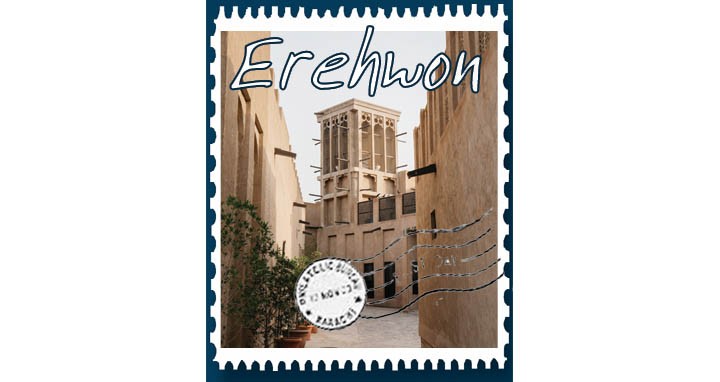
Al Bastakiya is a different type of Dubai, one that connects the past to the present

My favourite part of being in Dubai is walking in the historical quarter of Bur Dubai near the creek and its restored residential settlements. Even when the heat and humidity combine to make it feel like 52°C, there is the promise that evening will bring respite near the water and the small patches of new, landscaped green in Al Fahidi district and Al Bastakiya. Evening breezes blow gently through the tight, mud plastered alleyways of the settlement giving respite at the end of the day.
Thought to have been quarters built by immigrant Persian tradesmen from the town of Bastak who settled in Dubai, Al Bastakiya dates from the late 1800s. To this day, the nearby spice market of Dubai is dominated by Persian tradesmen selling spices, saffron and teas. The history of how this neighbourhood was salvaged from demolition is fit for a fable of our times.
In the late 1980s, half of the 60 or so houses of Al Bastakiya were demolished to make way for modern government office buildings. Like our Walled City of Lahore in current times, the old courtyard houses of Al Bastakiya were used as warehouses or to house foreign labourers. These are structures made from coral, mud, gypsum and date wood. They are courtyard houses with wind towers that catch the cooling breeze and funnel it indoors. Considered a Persian invention, we have these in Pakistan in Hyderabad and old Gwadar.
To continue with the salvage story, just as the remaining structures of the neighbourhood were to be demolished for a parking place, one man stepped up in Al Bastakiya. Rayner Otter, a British architect, who chose to live in an old courtyard house, believed this neighbourhood to be priceless, and pushed back the tide. He wrote to Prince Charles just as the latter was due on a state visit, entreating him to bring the subject up with the Ruler. It was during this royal visit in 1989 that the demolition plans were cancelled. Many years later in 2005, the area was restored and preserved by the government.
One feels that this is the ‘real Dubai’, where sand met courtyard gardens and then transitioned to creekside waters and walkways. The old abras or ferries made of wood with their capacious holds and imaginatively shaped passenger decks are magnificent things, reminding me of Gadani and Gwadar, where I have seen these shimmering, golden wood structure made and disassembled. Men with the same dark skins and wiry hair work the wooden structures both here in Dubai and in coastal Pakistan.
When evening comes, the promenade around the creek is filled with South Asians from all over the coastal areas, from Kerala, to Sri Lanka to Bombay to Karachi. An odd cyclewala hawks his chai thermos placed in a plastic carton that serves as a pannier, fresh juice and shawarma are affordable light meals for all.
In the early morning, the plantations of berr trees, bougainvillea, Madagascar periwinkle, desert rose, date palms and sukh chein trees are watered with the municipality’s automatic water sprinklers and drip irrigation pipes, keeping them green despite the scorching heat. Bulbuls, sunbirds, doves and mynahs seem to have made Dubai their new settlement and habitat too, as gardens and urban greenery have become more established.
It is delightful to see the calmn and wellness that pervades the atmosphere around the waterside and grass enclaves. Here, people from all walks of life exercise, speak to their homes, or stretch their legs after long confines at indoor shops and offices. To so many it must be like their homes in the coastal areas of the sub-continent, free from the stiflingly new, westernised and mercantile public places so pervasive of Dubai.
This is the old Dubai made new again, where the desert Arabs, the sub-continentals, the Persians and Middle Easterners mingled for centuries trading in pearls and gold, spices and cottons.
Instead of feeling like an artifice, old Dubai is a meeting point for so many nations across centuries. On evenings in the thick of heat it feels like the old ways still have a hold here when collaborations and interminglings were natural, not yet dominated by any one way of being. A multiplicity brought together by trade and geography in a natural continuity of place and cultures that my ancestors would recognise.
Next to the creek, I settle into eating my delicious mezze and laham lamb followed by a sweet dish called Umm Ali, a cousin of lightly sweetened kheer. In the comfort of an Arab majlis sitting around a dastarkhwan, I look out at the creek with evening abras plying the waters and enjoy a different type of Dubai, one that connects the past to the present.
-- Image from
theculturetrip.com